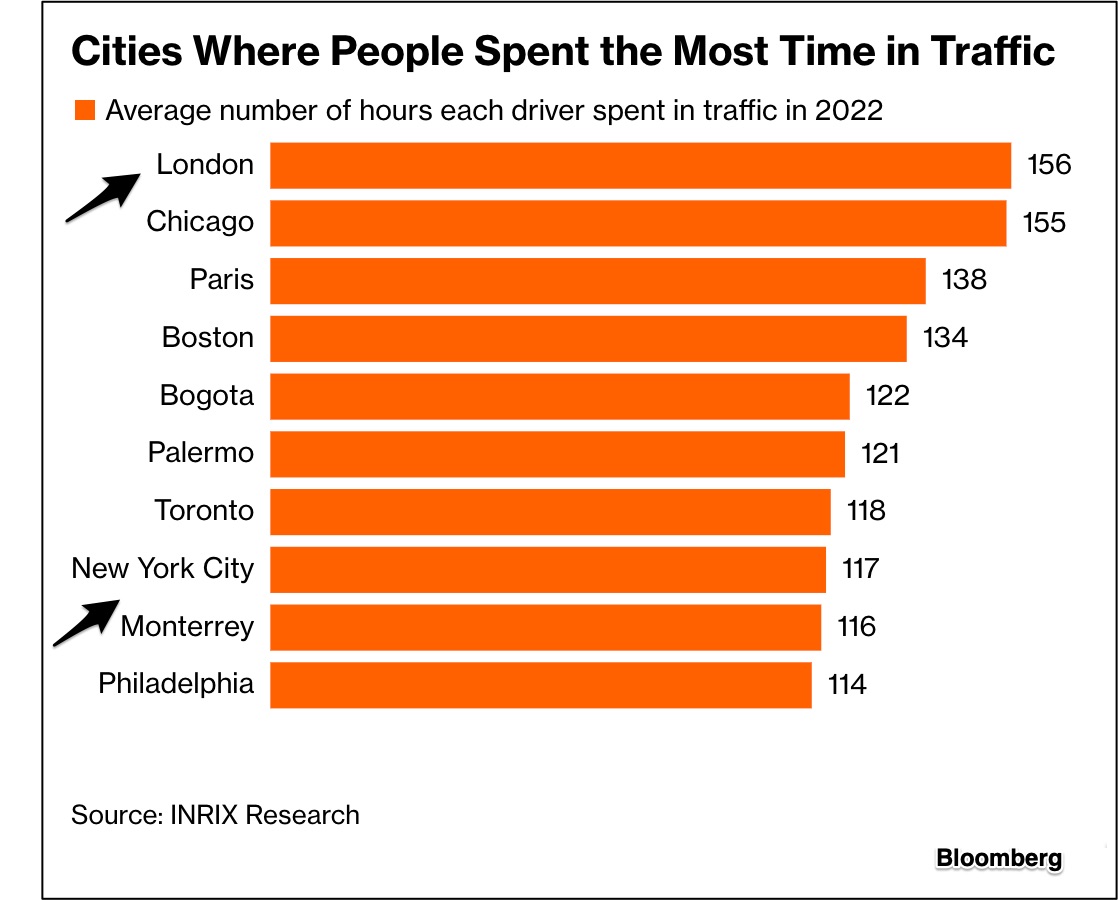
Our Weekly Economic News Roundup: From Superfakes to Bananas
May 13, 2023
Why We Expect Faster Deliveries
May 15, 2023Next year, I will be able to drive the 2.6 miles from 40th Street and 10th Ave. to 73rd Street and Madison Ave. in less than the hour it took me last week. But it will be more expensive.
The reason is congestion pricing.
Congestion Pricing
Manhattan
Expecting federal approval, the Metropolitan Transportation Authority will soon bring congestion pricing to Manhattan. For individuals like me, it could cost $23 to drive south of 60th street. to Wall Street, to Broadway. While they are still determining a cost structure that will vary for different kinds of vehicles, I assume my E-ZPass will record the payment.
Like all congestion pricing proposals, the goal is to diminish traffic jams, use less fuel, reduce pollution, save time, and raise revenue. The oppostion says the plan is regressive, punishing those with less income. For those of us from New Jersey, the tolls for the Jersey Turnpike and the Lincoln Tunnel are already approximately $30 for the round trip.
London
During 2003, when London first implemented its congestion fee, traffic plunged by 18 percent and delays dropped 30 percent. Per day, London charges 15 pounds ($18) between 7 a.m. and 6 p.m.
Its plan has generated considerable revenue:

Now though, there are many more delivery vehicles and for hire car services, Private cars are no longer the biggest problem.
As a result, London’s recent numbers are much worse than NYC’s:

Our Bottom Line: Externalities
By driving in a crowded city, you help to create an externality and also feel its impact. Defined as the impact of a policy or decision on an uninvolved third party, an externality can be negative or positive.
Congestion pricing creates a slew of positive externalities. It can make deliveries more efficient and diminish wasted time, pollution, and noise. Thinking of the quality of life, we can assume also that bicycle riders and pedestrians will appreciate fewer cars. Creating new incentives, congestion pricing could nudge us to the multimodal transport systems that combine rail and road.
But then, for middle and low income drivers, for out-of-state commuters, the negative externalities could far outweigh the positive side. And there are alternatives like the Paris model that limits high pollution vehicles.
As economists, our basic idea, as always, is the tradeoffs that every policy decision requires.
My sources and more: Bloomberg, here and here was ideal for congestion pricing facts about London and Manhattan while Inrix had the traffic statistics. Meanwhile, my best source for analysis was The Washington Post. Finally, do take a look at this econlife for many more congestion pricing details and here for the U.S. HOT lanes that also control congestion.
![econlifelogotrademarkedwebsitelogo[1]](/wp-content/uploads/2024/05/econlifelogotrademarkedwebsitelogo1.png#100878)




